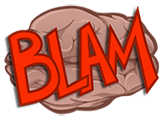Publications
1) Kita K, Otaka Y, Takeda K, Sakata S, Ushiba J, Kondo K, Liu M, Osu R. A pilot study of sensory feedback by transcutaneous electrical nerve stimulation to improve manipulation deficit caused by severe sensory loss after stroke. Journal of Neuroengineering and Rehabilitation, 10(1):55, 2013. https://jneuroengrehab.biomedcentral.com/articles/10.1186/1743-0003-10-55
2) Imamoglu N, Dorronzoro E, Sekine M, Kita K, Yu W. Top-down Spatial Attention for Visual Search: Novelty Detection-Tracking Using Spatial Memory with a Mobile Robot. Advances in Image and Video Processing, 2(5):36–53, 2014.
3) Imamoglu N, Dorronzoro E, Sekine M, Kita K, Yu W. Spatial Visual Attention for Novelty Detection: Space-based Saliency Model in 3D Using Spatial Memory. IPSJ Transactions on Computer Vision and Applications, 7:35–40, 2015.
4) Sekine M, Kita K, Yu W. Designing and Testing Lightweight Shoulder Prostheses with Hybrid Actuators for Typical ADL Motions and Impact Absorption. Medical Devices: Evidence and Research, 8:279–294, 2015. https://www.ncbi.nlm.nih.gov/pmc/articles/PMC4501219/
5) Kita K, Otaka Y, Sakata S, Osu R. Effectiveness of sensory feedback by transcutaneous electrical nerve stimulation for stroke rehabilitation: A case series. Journal of the Society of Instrument and Control Engineers, 52(3):120–126, 2016 (in Japanese).
6) Sekine M, Shiota K, Kita K, Namiki A, Yu W. A lightweight shoulder prosthesis with antagonistic impact-absorbing hybrid actuation for bimanual activities of daily living. Advances in Mechanical Engineering, 8(4):1–17, 2016. https://journals.sagepub.com/doi/10.1177/1687814016645982
7) Fernandez-Vargas J, Kita K, Yu W. Real-time Hand Motion Reconstruction System for Trans-Humeral Amputees Using EEG and EMG. Frontiers in Robotics and AI, 3:50, 2016. https://www.frontiersin.org/articles/10.3389/frobt.2016.00050/full
8) Yoshida T, Otaka Y, Osu R, Kita K, Sakata S, Kondo K. New portable voice guidance device for the manual wheelchair transfer: a pilot study in patients with hemiplegia. Journal of Disability and Rehabilitation: Assistive Technology, 12(4):411–416, 2017. https://www.tandfonline.com/doi/full/10.3109/17483107.2016.1167261
9) Fernandez-Vargas J, Tarvainen TVJ, Kita K, Yu W. Effects of Using Virtual Reality and Virtual Avatar on Hand Motion Reconstruction Accuracy and Brain Activity. IEEE Access, 5:23736–23750, 2017. https://ieeexplore.ieee.org/document/8081763
10) Mejia Tobar A, Hyoudou R, Kita K, Nakamura T, Kambara H, Ogata Y, Hanakawa T, Koike Y, Yoshimura N, Decoding of Ankle Flexion and Extension from Cortical Current Sources Estimated from Non-invasive Brain Activity Recording Methods. Frontiers in Neuroscience, 11:733, 2018. https://www.frontiersin.org/articles/10.3389/fnins.2017.00733/full
11) Kita K, Rokicki J, Furuya S, Sakamoto T, Hanakawa T. Resting-state basal ganglia network codes a motor musical skill and its disruption due to dystonia. Mov Disord., 3(9):1472-1480, 2018. https://onlinelibrary.wiley.com/doi/full/10.1002/mds.27448
12) Kita K, Osu R, Hosoda C, Honda M, Hanakawa T, Izawa J. Neuroanatomical Basis of Individuality in Muscle Tuning Function: Neural Correlates of Muscle Tuning. Front. Behav. Neurosci., 2019. https://www.frontiersin.org/articles/10.3389/fnbeh.2019.00028/full
13) Uehara K, Furuya S, Numazawa H, Kita K, Sakamoto T, Hanakawa T. Distinct roles of brain activity and somatotopic representation in pathophysiology of focal dystonia. Hum Brain Mapp., 40(6):1738-1749, 2019. https://onlinelibrary.wiley.com/doi/full/10.1002/hbm.24486
Kahori Kita
Kahori Kita joined the BLAM lab in August 2018 as a postdoctoral fellow.
She received her PhD in Precision Engineering at the University of Tokyo. Her research was focused on developing myoelectric-to-motion classification for myoelectric hand control.
During her postdoc at Advanced Telecommunications Research Institute International (ATR), her research focused on rehabilitation of stroke patients. She developed a sensory feedback system by transcutaneous electrical nerve stimulation to improve manipulation deficit caused by sensory loss after stroke. Then she moved to National Center of Neurology and Psychiatry (NCNP) as a postdoc, and investigated neural basis of focal task-specific dystonia by integrative use of multiple functional neuroimaging techniques such as fMRI, DTI and EEG in addition to behavioral experiments.
Her research interests are to use research tools such as behavioral experiments, neuroimaging and computational modeling, to understand motor control and learning processes, neural basis of movement disorders, and applied these insights into rehabilitation.
In her free time, Kahori enjoys biking and hiking.

